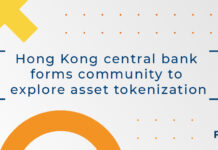Cointelegraph spoke with the Sui network to better understand how blockchain is playing a part in enhancing security and efficiency for the Athens Stock Exchange.
The Athens Stock Exchange (ATHEX) is positioning itself to become a trailblazer in the financial world as it plans to integrate blockchain technology into its Electronic Book Building (EBB) system.
ATHEX announced the move in early March in collaboration with the Sui blockchain ecosystem to have securities minted as digital certificates for enhanced security, efficiency and transparency for its users.
The primary issuance process traditionally involves separate confirmations for securities allocation and settlement. However, integrating blockchain simplifies this by merging them into a single, streamlined confirmation.
This could translate to faster and more efficient transactions for everyone involved — the exchange, its members, investors and, most, importantly, issuers raising capital.
Cointelegraph spoke with a representative from Sui to better understand its collaboration with ATHEX and its blockchain being used to level up operations in a traditional finance (TradFi) setting.
Enhanced security and transparency
One of the primary motivators for integrating blockchain into a highly sensitive network — like a stock exchange dealing with billions of dollars on a daily basis — is a significant security boost.
Digital certificates, inherent to blockchain transactions, provide an advanced layer of security alongside being on a public, immutable ledger, which can help eliminate the risk of manipulation — a persistent challenge in TradFi.
This transparency extends to regulatory oversight, allowing regulators to easily monitor trade activities for suspicious behavior. The Sui spokesperson commented:
“Centralized processes of primary issuance have fallen victim to bad actors in the space for decades and malpractices of non-transparent allocation.”
“Also having an immutable, public ledger reflecting trades would simplify regulators’ ability to monitor trading activities for suspicious transactions or improper allocations,” they said.
They noted that this particular use case is suited for decreasing the risk of primary issuance and increasing the overall efficiency of capital raising, price formation and transparent allocation.
Electronic book building on-chain
EBB aims to be a future fundraising tool, allowing early-stage and mature companies to list transferable securities.
According to the Sui representative, the Greek stock exchange’s EBB places it at “the forefront of innovation […] in comparison to exchanges around the world.”
“ATHEX has made a successful use of the EBB,” they said, “to re-launch their corporate bond market with a large demand from retail and with significant oversubscription.”
The goal in leveraging blockchain technology is to increase innovation while having the safety, security and transparency that individuals and regulators require.”
They also advised that when implementing blockchain in a project in the traditional financial market at scale, it is essential to prioritize the speed, security and fees of the given blockchain network.
Sui said that other exchanges had made attempts at adopting blockchain technology in other parts of their business strategy, but ATHEX’s committed partnership with Sui places it ahead of the pack in taking action with Web3 tools.
Web3 TradFi trends
While ATHEX may be one of the pioneering stock exchanges implementing blockchain with its EBB tool, other global stock exchanges have been dabbling in the Web3 space, too.
Significantly, on March 11, the London Stock Exchange (LSE) declared its intention to consider applications according to the criteria outlined in its Crypto ETN Admission Factsheet for Bitcoin and Ether cryptocurrency exchange-traded notes (ETNs) during the second quarter of 2024.
On March 25, it said that applications for the crypto ETNs could be submitted as soon as April 8, with successful funds to be listed the following month with approval from the country’s Financial Conduct Authority.
While not a blockchain integration, the exchange’s openness and Web3-friendly approach could point toward a larger trend in TradFi.
Source: cointelegraph.com




